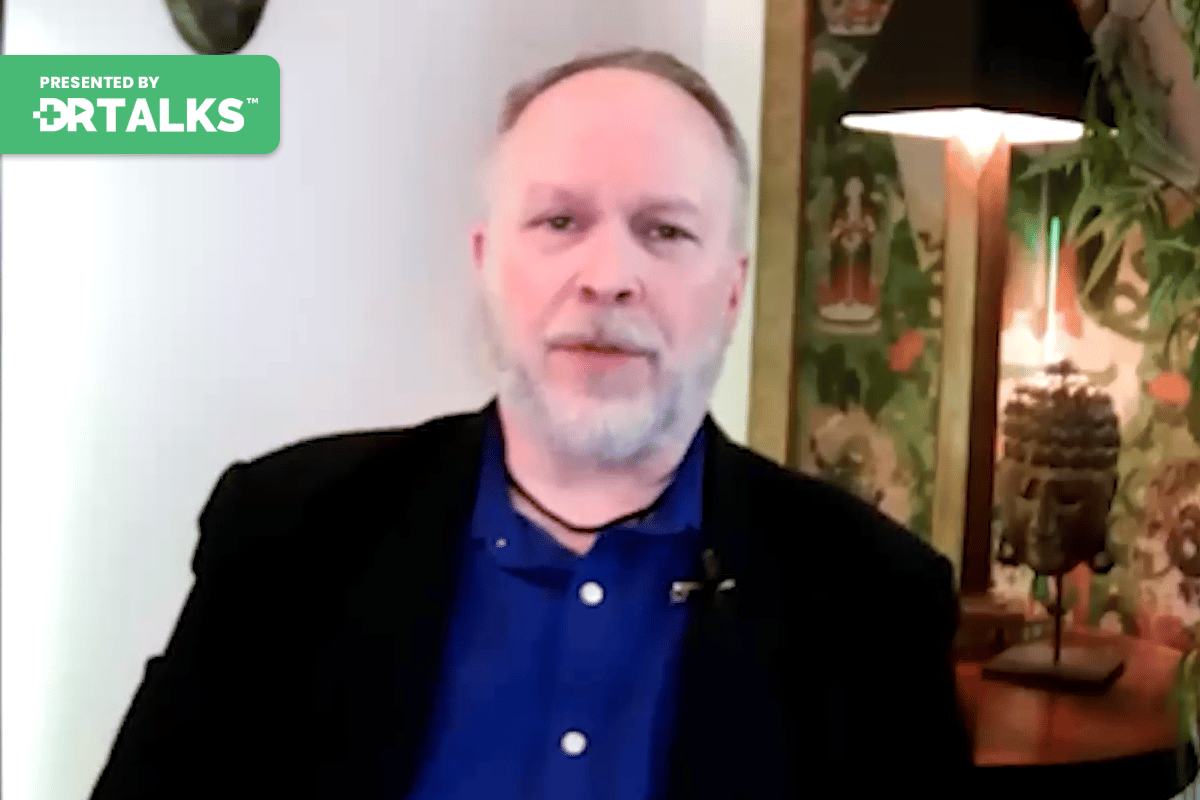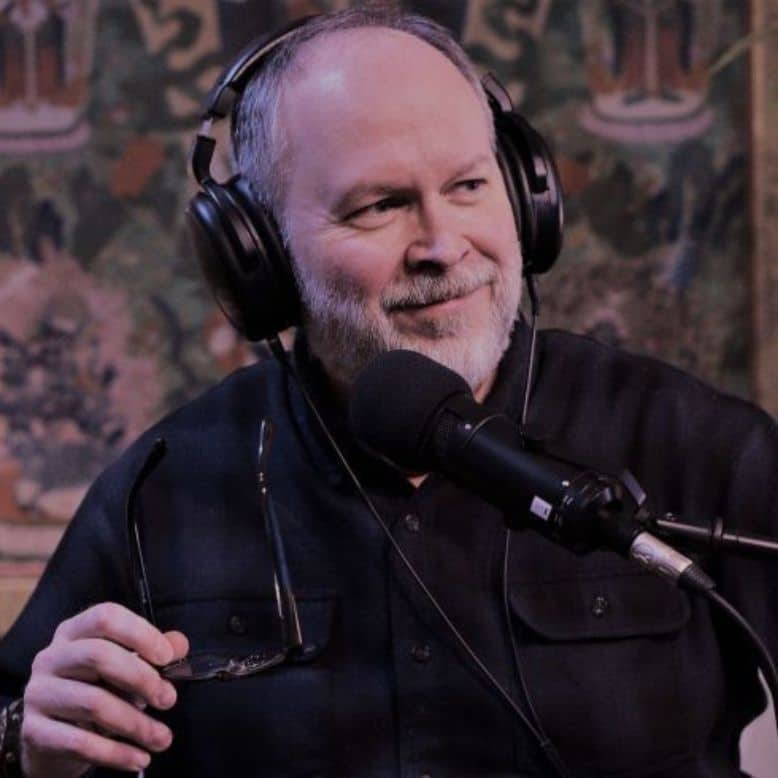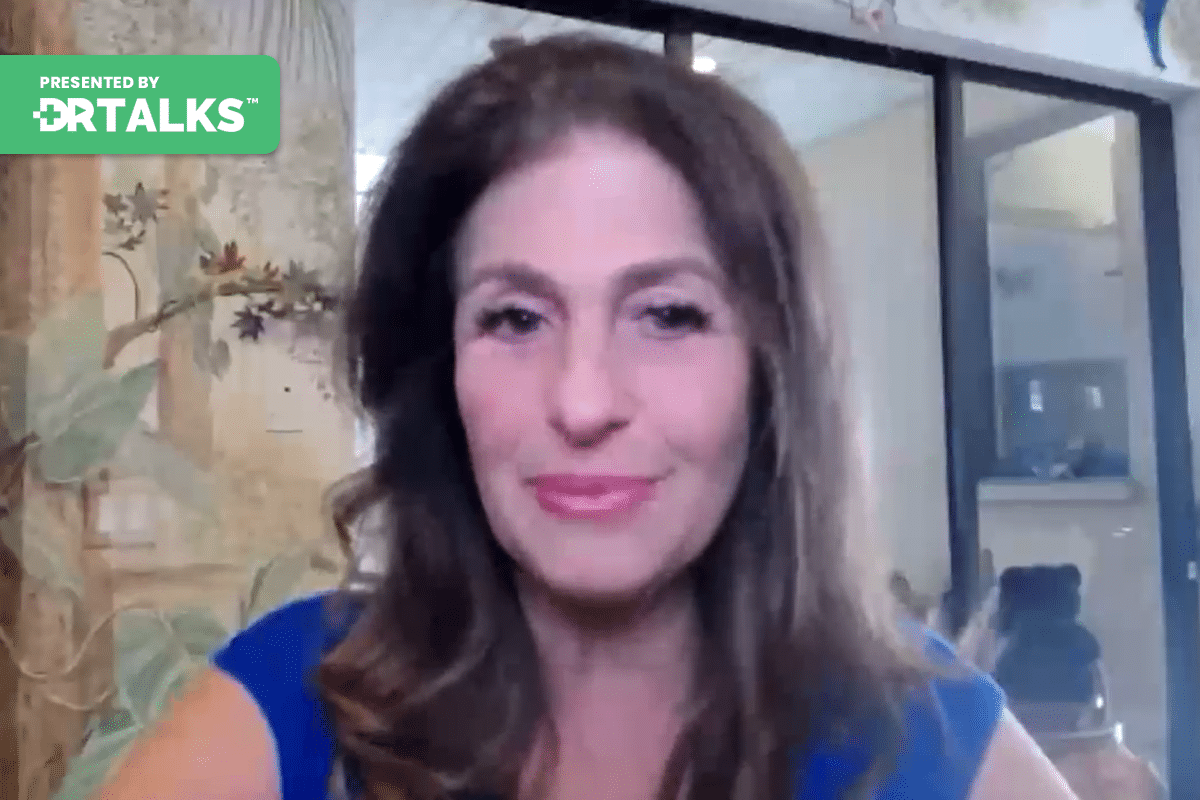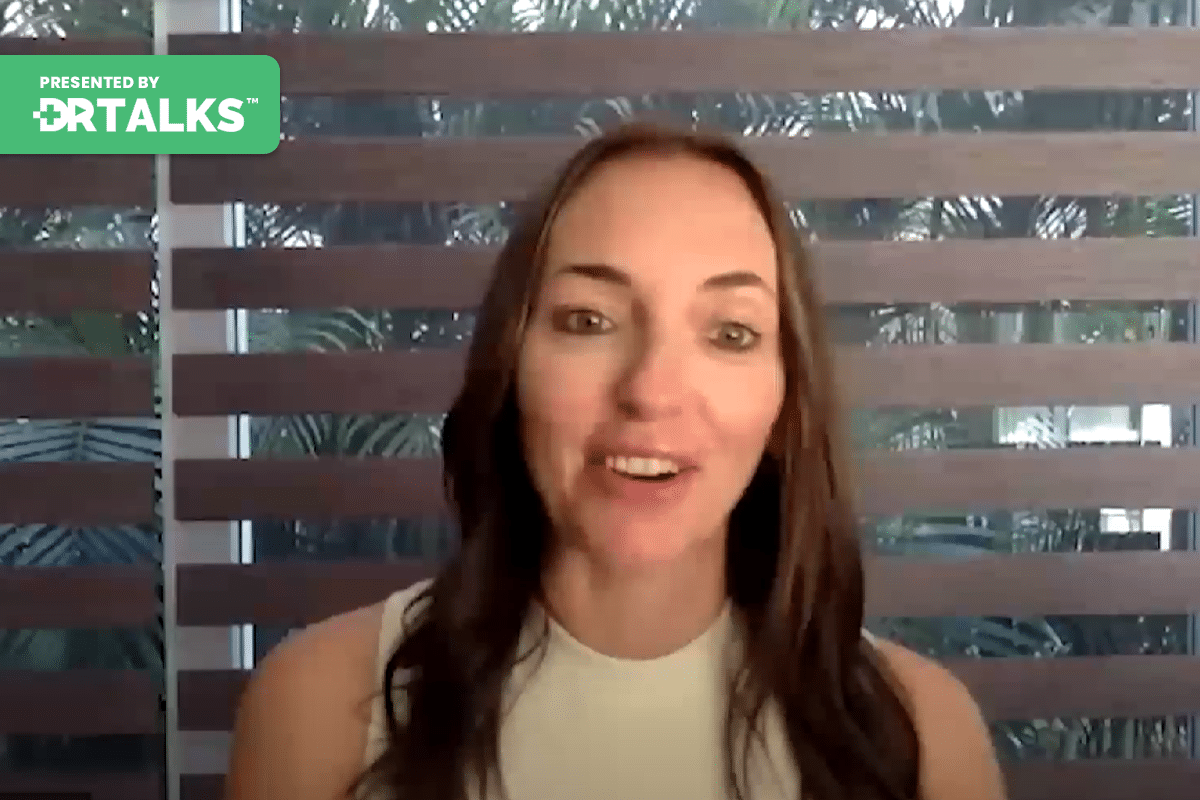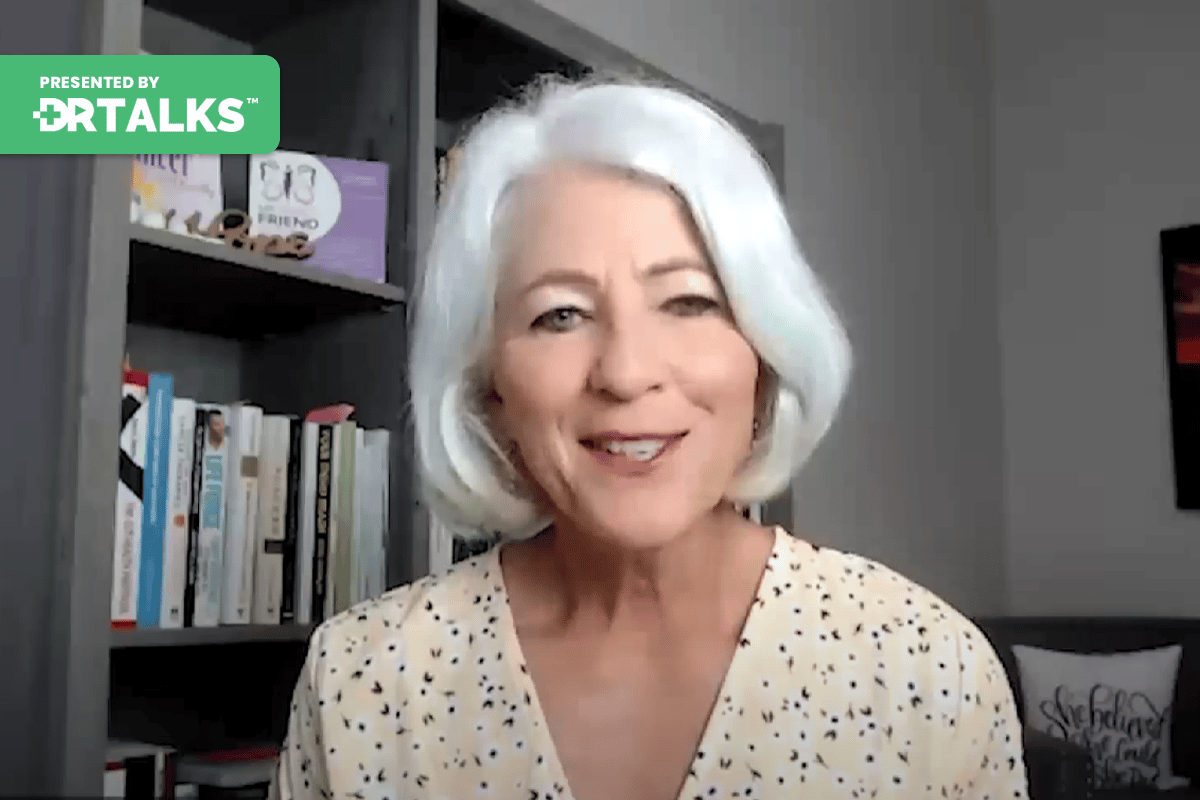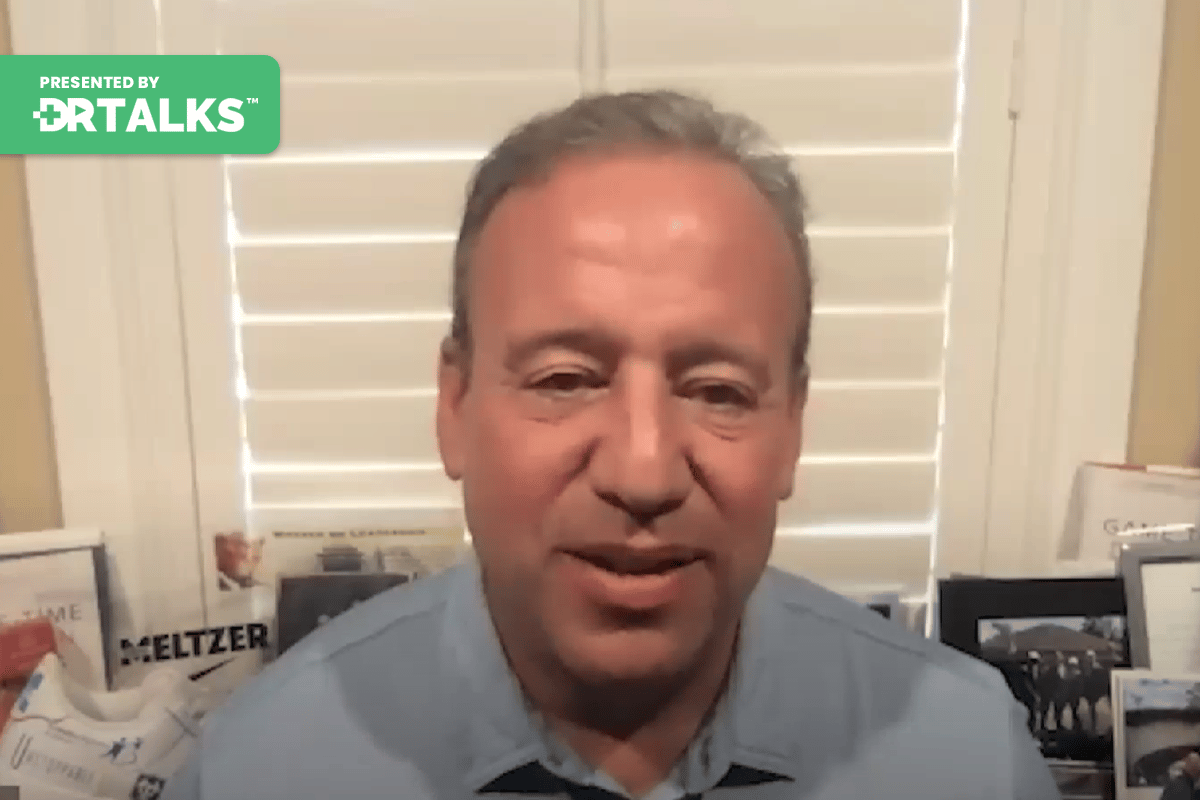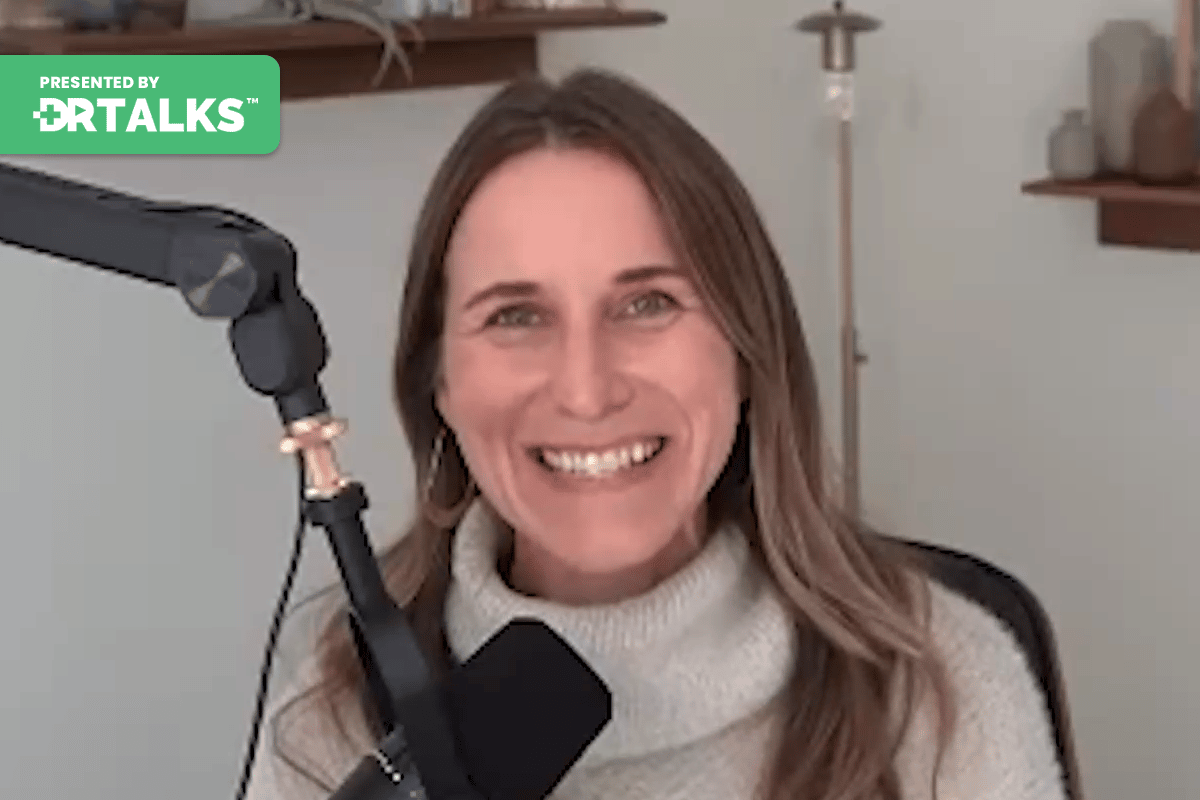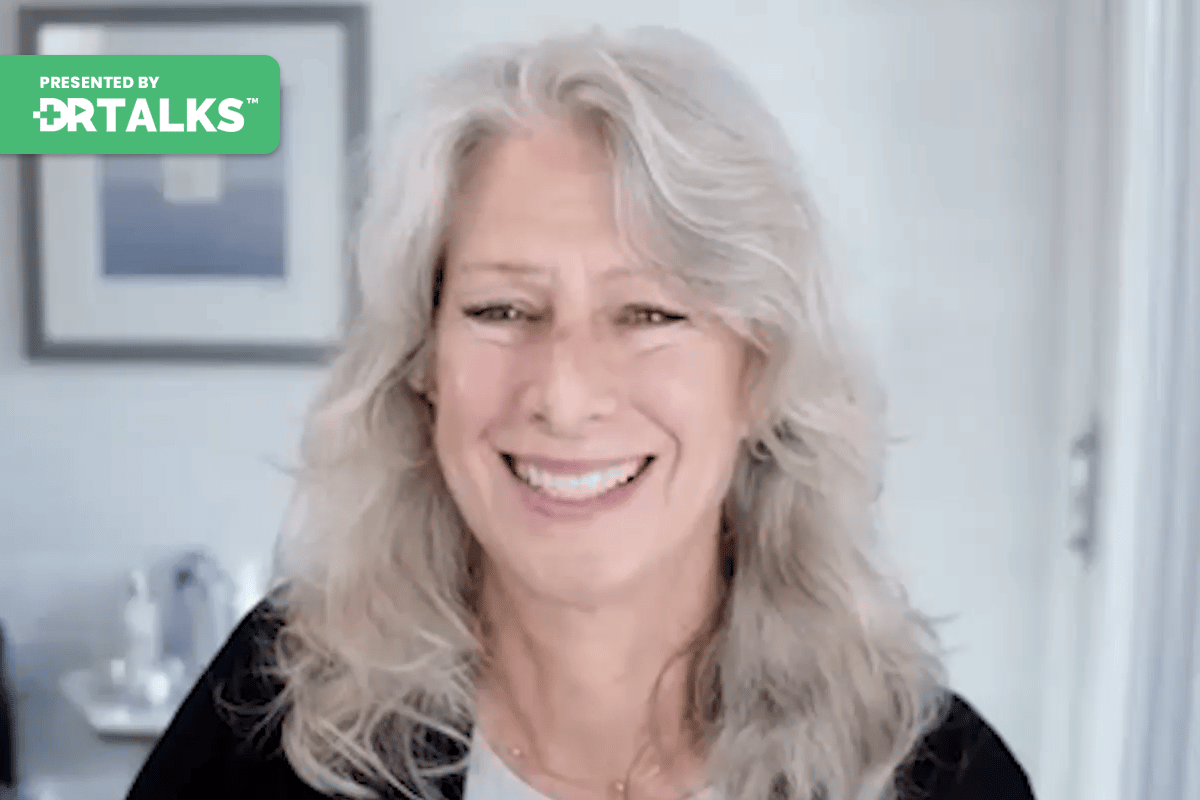Join the discussion below
- Learn about the revolutionary power of Holosync neuro audio technology
- What makes Holosync different than other sound technologies, and why has it been so effective in helping people heal and grow?
- A drug-free way to increase brain resilience, focus, memory, and mental health
- What are epsilon brain waves, and how can they help us heal trauma?
- The latest research on gamma sound frequencies and new potential treatments for Alzheimer’s
- A special free gift, exclusively for Healing Summit attendees!
Tom McCarthy
Our next expert guest is somebody that I’ve been looking forward to this interview because I want to learn more about what he does and what his company, Centerpoint does. I’m very familiar with the company, I knew Bill Harris, the founder, the company, I’ve used the holy sink meditation for many, many years. But today I get to get behind the scenes with him and really figure out what’s going on behind the scenes. So Marc is a lifelong student of the therapeutic power of sound and music and he’s always had a passion for helping other people and for over 25 years now. So you go way back into Center Points history you have been part of the company and what I find most interesting is you’re the chief product designers. So all these amazing products that have been created through Center Point like Hollis inc the trauma sweet, I think getting rid of pain I think is one of them. I mean so many cool things you’ve had your hand in and you’ve been developing these products for a long, long time. So you’re an expert in neuro audio technologies and how to use meditation to reduce stress. Marc, it’s really great to have you here. Thanks for being on with us today.
Marc Gilson
Hey, it is a pleasure Tom. Thanks so much for inviting me. It’s great to talk to you.
Tom McCarthy
Yeah, so I found out about holly sink because I was in a group with Bill Harris, the founder of whole sink called the transformational leadership council. And actually no I found out about it before that somebody had gotten holla sink, a friend of mine from the corporate world and they’re like, I never was able to meditate and this enabled me to meditate. So give us some of the background of center Point and and particularly maybe start with the whole thing because I think that was the first product. Right?
Marc Gilson
Well yeah, you’re right, I mean I never really thought about it that way, but it really was the first product. I mean of course Bill had been experimenting with all kinds of meditation you know from his youth, you know into the 19 eighties and he has, he had been experimenting with something called Binaural Beat Entrainment which may be a lot of the audience members will, will recognize but he recognized you know that both the power of that technology and also some of the limitations of it and without putting too fine a point on it. The main limitation is that it does create benefit, it generates benefit in the moment, but it really doesn’t create the long term changes that Bill was looking for.
So to you know, kind of take this from a big picture standpoint to start because everything for us here at Centerpoint revolves around hollow sake. There is no center point, there is no trauma suite, there is you know, none of these, these products without this core technology, so hollow sink is really a form of what we call neural audio technology, which is basically just you can think of it as sound that affects the brain. It can take you. The basis I said is binaural beats and treatment so that alters brain wave states so it can take you to or through virtually any brainwave pattern and therefore virtually any state of consciousness. And I think one of the cool things about it that sometimes people don’t tune into necessarily immediately is that it’s totally non invasive. There’s no drugs, there’s no magic spells, there’s this, it’s just sound, but Hubble sink is a very refined version of that technology.
So one of the things real quickly that sets it apart from other types of binaural beat entrainment is that it actually replicates the benefits of long term mindfulness meditation. And you were talking about, you know, I have been at the center point for quite a while since 1996 and you know, back in that time mindfulness meditation was kind of New agey, you know. And not in a good way, I guess, you know, something that, you know, old monks and mystics were doing way up high in the Himalayas or something, but today we’ve got all this new science that backs up the power of mindfulness.
And so you see these practices now that used to be really esoteric and they’re being taught in boardrooms, they’re being taught in the military, they’re being practiced by professional athletes because it helps so much with focus with calming this, you know, stress with boosting creative performance and just a ton more. So when you have something like Hello sink, which makes meditating easier and way faster. You know, you’re talking about a really transformational tool but one more thing and this is kind of what I think you’re getting at earlier is that holistic is really in a different class of even binaural beat entrainment because it’s what we call a neural driver. So what’s that? It’s something that uses low carrier frequencies and I’ll kind of skip the science part of it. But these low carrier frequencies can saturate or drive the nervous system and cause the system and the brain to reorganize itself And growth. So the kinds of benefits that I think you’ve experienced that, you know, everybody has been using hollow sink over the last 30 years. I mean reduction in stress and feelings of depression and anxiety, the improvements in memory and focus and concentration. The increase in mental and emotional resilience, which to me is big. And then of course the other really big e is the release of old trauma and mental and emotional material.
Tom McCarthy
Yeah, and I want to get into that too because that’s really interesting. We’ll get into that just a little bit later. But you said it makes getting into a meditative state easier and faster for people explain that like because some people do struggle with it right there mind super busy and then they try to meditate and it didn’t work and then they I can’t meditate this actually meditate even though even those people with the super busy minds by using this, they’re able to go deeper to meditations and get the a lot quicker. But
Marc Gilson
Yeah, well I mean you said it perfectly, it is first and foremost really a meditation tool. Now I will say that it doesn’t really matter to us if somebody picks up hollow sink and uses it and thinks of it as meditation. Because for some people there’s a distinction. But unfortunately that distinction for a lot of people is that meditation is hard. You know, it’s not easy because you’re taught in conventional meditation to kind of sit down and clear your mind and not think about anything and get into the, you know, and the expectations of meditation are high, you’re supposed to have something kind of magical happen while you’re sitting there with your eyes closed and that’s really, you know, if you talk to somebody who’s really a truly long term meditator, that’s not what happens most. I mean it can but it doesn’t usually happen that way.
So because hello sink does the work for you of getting you into these deep meditative states. Your job is to just put the headphones on and push, play and listen and get out of the way of the process and just let things unfold naturally. So you don’t have to clear your mind. I mean your brain is built to think thoughts, right? That’s what it’s doing all the time. Whether or not you’re really consciously aware of it. So with for example, you don’t have to clear your mind if mike, if thoughts and stuff come up what we tell people to just watch it, just like sitting next to a stream is flowing by, you may be very aware of the sound of that water flowing by at first. But the longer you sit there and don’t fight with it and don’t try and stop it, the more that just blends into the the ambient environment, so to speak. And you kind of merge, getting to cosmic, you know, you sort of merge with that feeling and we’ve all had that sensation. You sit there and you get used to the sound and pretty soon it’s pleasant. It’s part of your environment. So it’s just it makes it pleasurable. It makes it easier. But again, most importantly it speeds up the benefits. Most people don’t have 30, 40, 50 years to do 25,000 hours of meditation to get the benefits. And so that’s what really motivated Bill to work so hard for so long to create holistic and the holistic solution pro which is our core program.
Tom McCarthy
Yeah. And when we’re listening to holistic, explain to people what we’re listening to, right? Because there’s different tones. And I love the one with the ocean sounds because usually have like well, I’m talking about more in this, the sweets, you know that you have you can do it without the ocean sound where it has, you know, different sounds of the ocean sound. To me, just the ocean sounds are always like water. And so you can pick that. But what’s going on behind that? What are these tones and sounds and things doing? And then there’s even some embedded in some of your programs, some embedded affirmations that you can you’re out loud or you are there more subliminal. So what’s going on underneath this? That makes it so powerful?
Marc Gilson
Well, you know, on the one hand, it’s interesting. And it would seem kind of complicated on another way of looking at it, it’s actually really simple. I mean we are, after all talking about two distinct tones. So what’s really fundamentally happening? And then if you want me to kind of drill down a little bit more, I can but you know, we know that the brain operates in sort of a neuro electrical manner. As we’re sitting here talking there are these micro voltage, no electrical fluctuations happening in our brains all the time. 24 7 and we can measure the frequency or the rate at which those impulses are occurring. So if they’re happening roughly between say about eight and 12 cycles per second or eight and 12 hertz. And I’m just picking an example. Well, that means you’re generating a lot of alpha waves.
So alpha is one of the four or five main brainwave patterns in this case, Alpha is associated with light relaxation, heightened focus. Some people call it the super learning state back in college, we used to call it the two beer state. You know, it’s just, you’re kind of just relaxed and you’re sitting back and you’re getting into a very pleasant state of consciousness. Well, if we play a tone and let’s just pick a number, let’s just say 220 herds and we play that to the right year and then we pick a tone that’s slightly different, let’s say 230 heard. So we play that into the left ear what the brain does. And this was established initially by a paper by Dr. Gerald Oster back in 1973. You know, you can look that up if you like. But he was really one of the first to publish a paper describing what he called the frequency following response. So Oster said, look, if you play this 222, 130 or either way, the brain does something really cool. It takes those two tones and it synthesizes them and it creates a third phantom tone or harmonic based on the difference or what we call a beat frequency. That’s where the beat and binaural beat comes from. So everyone knows the difference between 222 130. That gives you a 10 hertz signal. It’s a standing wave formed right in the middle of the brain and the brain stem and the brain essentially in trains or locks into that stimulus, which is the state exactly, it’s right in the middle of alpha. So that in a nutshell, is how binaural beat works. The one character.
Tom McCarthy
I didn’t know that. So I learned, I just learned something. I didn’t get playing at 10 hertz and that just sink. But it actually the brain is creating the difference. And then that’s what
Marc Gilson
That’s right, yeah, yeah. Each side of the brain has its own hearing center and process that sounds differently. And there’s some fascinating reasons why that is in terms of how we specialize and locate sounds in our environment. But the bottom line is that we can take advantage of this frequency following response that Dr. Oster described back in 1973 and use binaural beat entrainment, use entrainment to go to or through any of these states. So when this first came out, of course, you know, you had people, probably before Bill a little bit, but they were saying, you mean to tell me we can get into a sleep state.
We can combat jet lag, we can get energized without drugs, Okay. Which a lot of people are using recreationally and otherwise in the seventies to expand their consciousness to alter their states. The answer is, yes. So ever since then, you know, this little industry has kind of sprung up and I’d like to think Centre point has always been at the forefront of that since bill started back in 1989. And we’re always trying to refine it, improve it, explore it, discover what it can do and with about two million people around the world who have used it. That is a huge body, you know, of data that we can draw from. Some of it’s, you know, obviously a lot of anecdotal, but it’s a lot of data that tells us a lot of things about how this technology works.
Tom McCarthy
Yeah, I know it’s a phenomenal program, whole sink. And again, I’ve had it for years and, and you really feel the power of it when you use it.
Marc Gilson
Yeah. Good. Yeah.
Tom McCarthy
Get into a nice, alpha state, you know, or deep state really quickly and then it just like you said, it accelerates your ability now to just experience that state and the benefits that that brings without having to do 10,000 hours or however many hours it takes normally to get there. Yeah, go ahead.
Marc Gilson
No, I just want to add one thing because you’re exactly right. But just to make this distinction because this is kind of in my mind, this is the coolest part, right. You know, it really is like exercise for the brain because we don’t just pull you into that deep state. We open, we, you know, saturate the nervous system with enough stimulus because we use very low carrier frequencies to do it. So when you, when you do that, you know, it means that you’re kind of, you know, a good thing is like to talk a little bit about exercise when you work out, right? You know, you’re giving your body more stimulus than it’s used to handling, you know, your weightlifting or you’re running or you’re cycling or something like that. And if you do that consistently enough, you’re gonna see benefits, You’re going to see gains, right? But you also lose something when you exercise, right? You if you’re a little bit pudgy around the middle, right? You know, I mean, you’re a little out of shape, you burn off the excess fat.
So, I mean, I think that’s that’s key too, because in our frame of reference, a lot of people have things like trauma. They have old unresolved mental and emotional material that is the kind of fat mentally and emotionally speaking, that we need to burn off. So the appeal to hollow sink is as we’ve been talking about the benefits of mindfulness meditation, just making it a lot easier. But it also absolutely changes the actual functioning. It causes the brain to reorganize and he’ll and release so much of that old stuff. So to me that’s, that’s, that’s one of my favorite things about it.
Tom McCarthy
Yeah, that’s really cool. Well and a couple of the, this being the global energy healing summit, the Holy sync program is amazing, right? Because it’ll get people down into a state where they’re in their parasympathetic, the healing response can really start to work right? But you have all sorts of cool suites and two in particular I think would be really important for people to know about. One is the trauma Oh yeah, sweet. And then the other one is the one around getting, you know, relieving pain. So talk to us like how can listening to tones and, and and sounds, how can that go in and start to dig out traumas that have been in people’s minds for years and years and years.
Marc Gilson
Yeah, it’s huge, isn’t it? And you know, this is where holistic is really effective and pretty much all of us obviously are going to experience some kind of trauma in our lives or we certainly already have. But for about 60% of us, a lot of that trauma really stems from our childhood. So we, we know there’s trauma from experiences like, you know, physical abuse or sexual abuse or emotional abuse or PTSD, but you know, we can also suffer trauma from, from neglect, from the sudden loss of a loved one, the loss of a job, you know, poverty, community or family violence war, which we’re seeing, you know, natural disasters. In fact, you know, you might find this interesting, you probably know this already. But psychologists have been reporting a real uptick in trauma, like cases among patients in the wake of Covid, which makes sense. Right?
Tom McCarthy
I mean, a lot of physicians actually,
Marc Gilson
Yeah, absolutely.
Tom McCarthy
Actually, physicians are one of the occupations most likely to experience trauma. Now. A lot of that happened with Covid, but just in just the stress that they encounter every day, even without Covid. Right. There is a friend of mine, Dr. Cheng Ruan, who just gave me that statistic, which I didn’t know. But there’s 75% more likely to experience trauma, Right?
Marc Gilson
Yeah, Yeah. And I mean, that’s even tougher because it’s occupational, right? It’s, I mean, it’s not necessarily tougher, but it’s certainly it’s striking. I mean, they’re just doing their jobs and they’re exposed to so much. And with Covid, I mean, not only do you have the doctors and the nurses just, you know, obviously, just working to the bone to respond to this, this pandemic. But then of course, you’ve got, you know, people losing loved ones losing jobs, losing contact and connection with friends. I mean, my dad, on a personal note, you know, he was in hospice for over two years and this is right during Covid. So even though he was only an hour away, I really didn’t get a chance to see him and spend as much time with him as I wanted to. Now, that wasn’t traumatic per se. But I will tell you that it wasn’t easy. And I think a lot of people had those kinds of situations. But you know, whether you’ve endured trauma as a child or you or as an adult, I think that we all know that trauma goes way beyond the experience itself. So, you know, one other thing I’ll say about this is just that I think it’s important. You know, I am not a doctor, I’m not a mental health professional, but I’ve been watching thousands of people cope with their trauma in different ways and getting benefit From Hollow Sink, which will continue to talk about. But it’s important to know, I think that we can’t just water down or erase memories of the past and think that we’ve dealt with the trauma, we have to address the impact the trauma is having on our lives today, even if it happened 30, 40, 50 years ago. So you asked about holistic, I can jump into that.
Tom McCarthy
And so it will know. So how does it work in in terms of helping us with trauma, like what’s going on when we listen to and the trauma suite has several tracks that you can listen to recording and they all have specific purposes. And by the way, we’ll announce later you’re giving, you’re giving us a gift. One of the tracks from.
Marc Gilson
I am. Yeah. Spoiler earlier, right? Yeah, I’ll talk about that. I don’t know if I have time to talk about every one of the tracks, but I’ll certainly talk about some of them.
Tom McCarthy
We don’t need to talk about all the tracks. Maybe the mechanism like sure on. And when we listen to this, we’re always
Marc Gilson
Question. Yeah. Yes, absolutely. Well, you know, I mentioned neural saturation a few minutes ago that neural driving, property that Hollis inc has. So, and we talked about exercise and so when we exercise, we’re causing the body to change and grow. We talked about the fact that the mental and emotional equivalent losing excess fat is that unresolved mental and emotional material. So, again, hello sink is pushing that brain, right? It’s flushing out that old stuff. And what happens is people continue to listen to it is the brain reaches a certain threshold for what it could handle. So there’s a cumulative effect to listening to hollow sink consistently.
And, you know, people sometimes can say, well, what if I miss a day? Hey, that’s no big deal. We’re all human and we’re all going to miss a day. But that consistency really generates the changes because it causes the system to reach that point where it says, look, if you’re gonna keep feeding it feeding me this tough stimulus every day. We’ve got to get rid of some of this old stuff that’s been holding us back, holding us down for years, so it builds resilience in that process. And to me this is key because, you know, people who’ve experienced trauma of course know this instinctively, but trauma lowers our capacity, our threshold for handling stress, right? So with holistic, you’re not just meditating the trauma away, you’re actually reconditioning the brain, your conditioning the nervous system to become a lot more resilient. And this is particularly important, I think with what we call silent trauma, okay, which is repressed trauma, and you might find this this interesting because people and I’m sure, you know, people like this, you know, and and it’s just it’s so difficult to watch, but people live lives riddled with depression and anxiety and poor self esteem and they live that way for so long that they just kind of assume that’s life, that’s just how things are gonna be, it’ll never change. But we have to call that out as a myth because I think it’s a really dangerous one, living that way shouldn’t be the norm.
You know, we talked about kind of neural plasticity, you touched on that a little bit, we now know the brain is not hard wired, you don’t have to live that, you know, with the brain you were dealt, you can change, it can be plastic, you can fundamentally change the way and improve the way the brain functions that can reorganize, so when if we if we feed it negative stimulus, like memories and was like, I can never heal, this is never going to get better, we’re going to get a negative result. But if we feed a positive stimulus like hollow sink, then we start to kind of cause that fitness process to be triggered, I guess I could say to change to reorganize and grow and as you know, tom I mean I’ve seen you talk about this a little bit before everything good in life, everything starts with with a better, with a better brain.
Brain health is key to virtually, it all starts there. If you can improve your brain health, there’s a correlative improvement in every other part of your life. So when we get to this, you know, if you want me to jump ahead a little bit, there is one thing that kind of occurs to me. You know, I saw a video of you actually tom you were talking about stories and how they can limit us sometimes and I started thinking about how true that was with with trauma and I think you said something like, you know, we get addicted to stories and I think you were talking about that more in terms of a sense of self and success in the way you’re running your business, but I think it applies to this as well because when trauma is so much a part of our story, we gotta be careful not to get addicted to tell the story over and over
Tom McCarthy
And part of what you need to do right is to I mean you need to have a better story, but if you put a better story on top of a you know, crappy foundation where the trauma is, it’s not gonna it’s not gonna have, you know, it’s not gonna be able to grow from that. So in my book, the breakthrough code, I talk about, you know, letting go of your old baggage, which is exactly what holistic allows you to do it. It makes it easier just for the mind to release it and let it go and now you’re better able to take on this and more empowering story.
Marc Gilson
Yeah. And so this is what we found out what we’re beginning to build this week because we’re you know, we’re spending 30 plus years watching people heal trauma and then we go, okay, we have plenty of data. Now let’s create something that zeroes in on this. And so we created the total trauma relief suite and what we discovered is that most trauma is truly repressed and I don’t mean just ignored, okay, but packed away store deeply in the unconscious out of the way of your conscious awareness. So it sort of gets tamped down impacted.
Tom McCarthy
Yeah, yeah, yeah, I don’t remember everything from two years old. Yeah,
Marc Gilson
Well you certainly don’t have the skills to process that. I mean, but even as adults, we don’t always have that. In fact, that’s a good point. I wanted to talk about too because repressing uncomfortable thoughts and memories is not abnormal or wrong. Right? And I emphasize that because sometimes people kind of talk about that like they’re they’re they’re ashamed of it or that there’s some kind of weakness or a character that’s not, it’s absolutely a coping mechanism.
Tom McCarthy
But it traps energy. It does. And then with that energy trapped you can’t move forward.
Marc Gilson
Yeah. Well, again, it’s like boxing up that toxic waste, hauling it in the basement, thinking you’re you’re done and then you wonder why you’re still kind of sick or you don’t feel well it’s because you’re living a little with this toxic waste, so it affects every part of our lives. But what we found out that’s cool. I think it’s cool because I geek out about this stuff is that, you know, we’ve been working, we talked about alpha brainwave patterns beneath that, we have theta brainwave patterns. And beneath that still we have delta brainwave patterns and delta is commonly associated with very deep sleep, very deep meditative states.
But recently, and this is something not many people know there’s been this interest in a subset of delta way called epsilon waves now, frankly not a lot is known about these exceptionally deep brainwave states just yet because they’re quite hard to detect and to measure. but we’re talking extremely slow deep brain wave patterns below one cycle per second. And while we’re still learning about these very low brainwave states, it’s believed that they come for from the deepest parts of the brain, the parts that are kind of like a storage locker for that old repressed trauma. What do you want to do when you repress the stuff that you don’t want to have to face or deal with? You don’t know how to face or deal with. You get as far away from your conscious awareness as possible that we think is epsilon. So with this wweet that I mentioned the total trauma relief suite, we actually used hello sink on one of the soundtracks to target these epsilon waves and access these very deep states of consciousness. And then of course we also have the track that we’d like to give away to people today, which is really focused on that resilience, that neural driving piece. So, I mean when you add all this up, that’s called radiant resilience.
Yeah. And before we’re finished, you know, remind me, I’ll go ahead and hand the link out so people can check that out. But ever since we released this sweet late last year, people are getting loads of this old negative stuff coming up and flushing itself out and it’s like a massive weight has really been lifted on their shoulders. So, and even if you don’t have a lot of trauma, you know, unfortunately I had a pretty good childhood growing up, but we all have difficult emotional things too. And so getting into these really super deep brainwave states is really powerful and transformative and it’ll absolutely revolutionize your meditation practice. If nothing else.
Tom McCarthy
That’s awesome. Hey, let’s give out that. Let’s give out that link now. Okay, Because then everyone’s like, alright, you said you’re going to give them, what is it? How do they get his track that is part of the trauma sweet mart.
Marc Gilson
Yeah, the radiant resilience track is yours free as a thank you as a free gift. If you just wanna experience hello sink. If you want to experience what it can do in terms of the neural driving effects. I’m going to give you this like I think it might appear elsewhere, but I’ll give it to you now. It’s myholosync.com
Tom McCarthy
And then let’s spell so M. Y H O L O S. Y N. C.
Marc Gilson
Correct. You got it. myholosync.com forward slash and this is all one word to of course healing Summit Marc. They decided to put my name on it. So it’s M. A. R. C. So it’s healing summit. H E A L I N G S. U M M I T. M A R. C. And if you visit that link, you’ll be able to sign up use that today. And and by the way, I mean at Centerpoint were huge on feedback. So even if you’re not a long time participant in the program is the first time you’ve ever heard of us who are the center point people. When you try it out, send us a note and let us know what you think of it. We collect that feedback. It’s gold to us. So we always appreciate anybody who takes the time to tell us what they think.
Tom McCarthy
Awesome. So we’ve got the core holistic program which is amazing.
Marc Gilson
Yes.
Tom McCarthy
I have a you have a trauma suite and then you attack all sorts of other issues. Like there’s a sleep suite which you can listen to to get to sleep quicker and then if you wake up get back to sleep even quicker, all sorts of great things. And then you’ve got also I think this is the newer one is the pain
Marc Gilson
Well there’s chronic pain. Yeah the 12, if we have time, I wanted to squeeze in because I’ve had so many questions come up about this and I don’t know if you’ve seen questions too because it is related specifically to we call it youthful mind. I’ll just get right to the point. It’s called youthful mind and the reason we created this. It’s based on some really interesting research that’s been coming out about Alzheimer’s disease and about neurodegenerative problems and about dementia and things like that.
And this research is ongoing but we built a track or we built a sweet I should say. That was based in part or inspired by that research and it’s just incredible. And I’m trying to I’ve been a real preacher about this. I’ve been trying to get this information out to as many people as I can you know for the past seven years because as I get older as my family gets older my mom gets older and so forth. I really want to you know be benefiting from the latest research and this is really cool stuff.
Tom McCarthy
And so what’s happening with that? What’s happening with the impact on the brain with that particular suite that allows us to hopefully be more resilient to dementia. Alzheimer’s things like that.
Marc Gilson
Yeah it’s mind blowing. You know back in 2016 Dr. Lee Y Sai and I’m so sorry if I got her name right or wrong. I always try and do a good job pronouncing it. But she is a fantastic researcher from M. I. T. And she started researching ways of treating Alzheimer’s now. This could almost be sort of a trigger word for some people and I completely understand why if you know anything about Alzheimer’s it’s a terrible disease. It’s not just something that you know kind of messes up your memory and makes you forget where you put your car keys right? It literally decimates the brain’s ability to function and I mean, on all levels and over time, it essentially causes the brain to forget how to keep your organs functioning, basically how to keep you alive. And so people who are familiar with it sometimes wonder why it’s so deadly and that’s why it slowly kills the brain. Now. I know that sounds terrible, but that’s because it is.
And you know, if you’ve personally experienced Alzheimer’s with a loved one, you know, full well that this is a serious and agonizing thing and not only that we’re not on top of this problem. Alzheimer’s cases are expected to rise exponentially over the next few decades and many of us will experience it, unfortunately. And most of the drugs currently anyway are only really marginally helpful and some of them just cost a fortune. So one of the things that scientists believe contributes to Alzheimer’s disease is a build up of a kind of plaque within the brain. It’s called a beta amyloid plaque. It’s a sort of protein based plaque and this plaque is a little like the same kind of plaque that forms on your teeth. It’s just sticky and it’s nasty stuff.
Now, the brain has these kind of, you know, they’re called janitor cells right there, like the janitorial team that comes in at night, they’re called microglia and they come in at night, usually as this plaque builds up, which it does for all of us. It is right now these microglial cells come in and scoured out just like we do when we brush our teeth to remove the plaque that’s forming on that. So and by the way, you know this is why sleep is so important among you know many other reasons is because it gives the brain a chance to do this cleansing process. But as that plaque builds up and up and up with somebody who is suffering from, you know the early stages of Alzheimer’s, there’s this cascading effect where the microglia can’t keep up with the beta amyloid plaque build up in the called tau tangles. And that’s when you’ve got a real problem. But going back to Dr. Sai’s research, what they did was they started to treat mice who had lots of this brain plaque but they didn’t give them drugs, they gave them gamma exposure in the form of sound. So basically they just played gamma waves at a frequency of 40 hertz.
Tom McCarthy
So it’s a really fast wave.
Marc Gilson
It is for you know, compared to other, you know, brainwave patterns, it’s a rather low tone. But yes it is. So 40 hertz and then they course went back and looked at their brains and they found a significant reduction in these beta amyloid plaques and an increase in this microglia activity. So then they added light stimulus on top of the sound and the results were even more dramatic and anyone can, you know, go to Professor google and research this. But my understanding is that they’re now approved to do human clinical trials using the same gamma therapy. And I think this is, I mean you think about this, this is a possible, I’m not saying secure, but this is a possible way to treat alzheimer’s or improve it or stave it off without any kind of drug therapy.
And I just want to mention because I know at least some of our folks out there listening are probably centerpoint people and they go, hey, wait a minute, I think I’ve got a gamma soundtrack from you guys and you know, you probably do. We learned about gamma Many years ago, there was a study in 2004 where a group of monks with extensive meditation practice and experience. We’re I mean we’re talking like 10,000 hours or more were studied and they were experts in practicing a form of meditation called the Meta Bafana, which is a very specific kind of meditation focused on, excuse me, unconditional loving kindness and compassion. Anyway, typically as you might expect when you see somebody’s brain waves as they meditate, they’re going slower and slower and slower and they’re dropping.
But with this form of meditation, what they found was that these monks brainwave patterns were going up, they were elevating up into this gamma range which is higher than beta, higher than the state we are in right now in fact. So this was really interesting and it showed that meditation is usually an activity of slower brainwave states. But there’s a lot of benefits to Gamma. So even before Dr. Sai’s research and all this really exciting stuff that’s now coming out. We, you know, remember Bill coming in one day and say, have you read this thing about the meta bafana monks? You know, and so we started building Gamma tracks left and right and spending weeks and weeks try them out. And we have several soundtracks. In fact, we do include one with the trauma relief. So it’s actually a bonus soundtrack called worry reliever that uses these same gamma patterns that you see there with the medal of honor practicing monks.
Tom McCarthy
Yeah, awesome. Well, hey, you’re blowing people’s minds today. All this great information. And again, I’m a huge proponent of whole sink and, and actually I was talking with Dr. Eric Robbins, a medical doctor that After 20, I think at least 20 years of chronic fatigue, you know, finally is is overcome that and he’s a energy healer and just an amazing doctor. But one of the core things in his arsenal to get over chronic fatigue was hosting. So yeah, very powerful and I’m so excited to expose everybody that doesn’t know about it. Two whole sink and and all the great sweets that you have whole sink is the core program. But then you’ve got the pain sweet, get rid of pain. You have the trauma, you have the one you talk, you talked about where we can help our brains not have to
Marc Gilson
Got useful mind. We’ve got something for super learning and memory were coming out with a brand new one and stay tuned. It’s going to be one of our best ones ever. But yeah, I think is a very versatile technology. So we’d like to think that whatever you’re dealing with whatever challenges or just whatever your desired outcome is, whatever your goals are, no matter where you are in life, this is a tool that has a place you know in your toolbox and it can make a significant difference. So certainly appreciate having the chance to come on and talk about that a bit.
Tom McCarthy
Great having you Marc. Let’s give that link out one more time just so everybody can remember that. So,
Marc Gilson
Absolutely yeah. And again, that’s for the radiant resilience soundtrack from the total trauma relief sweet. And again, that link, I’ll read it and then I’ll spell it. It’s myholosync.com/healingsummitmarc So it’s M. Y H. O L. O S. Y N.C.com/H E A L I N G S U M M I T M A R. C.
Tom McCarthy
Awesome. Beautiful and that’s a free gift for all of you.
Marc Gilson
That is an absolutely free gift
Tom McCarthy
Giving you. Yeah. Hey Marc, wonderful having you on. You are such a, you’re such an expert on this. I love talking with you and I’ve learned some things, even though, you know, I thought I knew a lot about it. You’ve taught me a couple of things here today too. So thanks so much for being with us.
Marc Gilson
Well, likewise, Tom, I mean you’re an inspiration to a lot of people and it’s been great to get to know you and have a chance to talk and just appreciate the opportunity you bet.
Tom McCarthy
Thanks so much.
Marc Gilson
Thank you Tom, take care.

